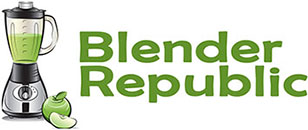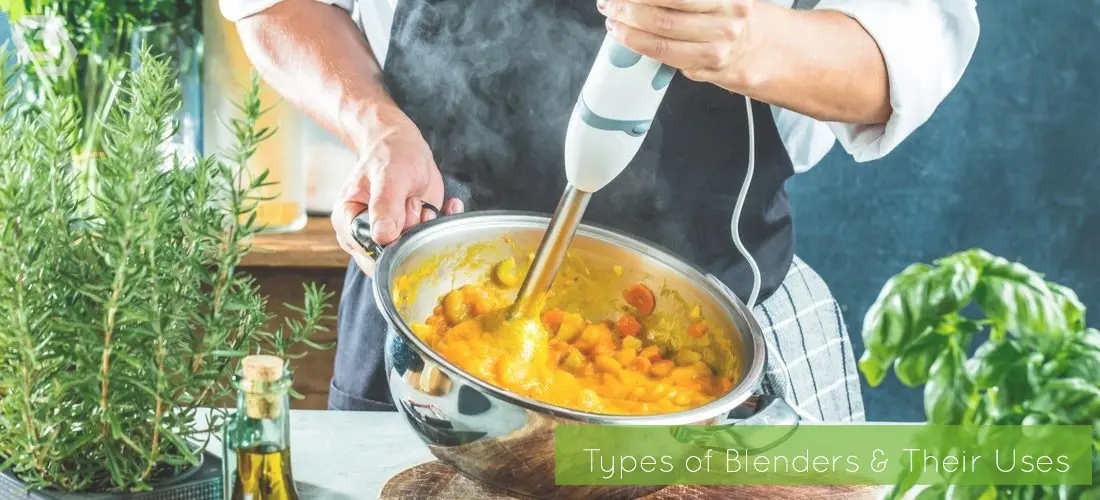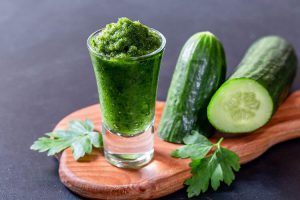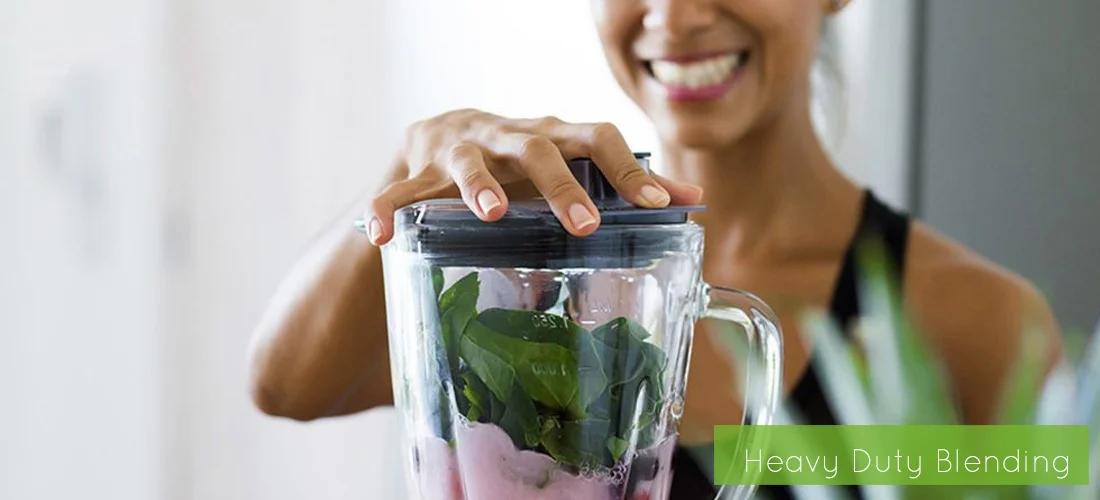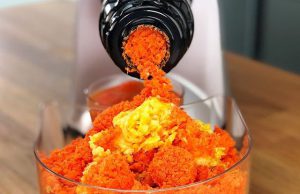Once upon a time if you wanted to blend your food you used a wooden spoon. Then clever humans developed the whisk before the amazing eggbeater came to exist. Now we have blenders. So many blenders.
We have hand blenders, immersion and stick blenders, portable blenders, countertop options, ones that fit in a stand, blenders that hold just enough for one person, and heavy-duty commercial ones.
We know that it can be hard working out which one you need – but don’t make the common mistake of assuming bigger is better. The various different types of blenders have pros and cons – and we’re going to help you work out which one you need.
1. Hand Mixer

These are often called hand mixers and are really just an electric version of the old-fashioned eggbeater. They may have different attachments, but they are a mixer designed for really beating ingredients together.
The most well-known is the KitchenAid, however, Cuisinart and Hamilton Beach are also popular.
What are Hand Blenders best used for?
Because they have variable speeds and multiple attachments, these are fantastic for a range of baking and desserts. They weren’t invented to be used solely to whip up fluffy meringue, but since KitchenAid brought the firsthand mixer to market in the 1950s that has been one of the biggest selling points.
Pros
They are quite lightweight, and because they don’t have a cutting blade you don’t have to hold a button down constantly to make them work. The vast majority of people just use the standard eggbeaters. These can be easily removed and are very easy to clean.
If you’re a baker, then hand mixers make a very economical and easy-to-store solution, particularly compared with a large bench mixer. For whipping items like cream or egg white where it is very easy to overbeat, hand mixers make it simple to see where you are at. Ripples are much easier to see, and it takes just a moment to check your peaks.
Cons
No cutting blade does mean that you can’t use hand mixers to create a super smooth batter. You need to make sure that your raw ingredients are already chopped to the size you want before you add them.
Most hand mixers are not designed to get through heavy dough such as shortbread. Trying to do so with one may cause premature aging of the motor or excess wearing of the attachment connection.
2. Immersion Blender & Stick Blender

These are perhaps one of the most common types of personal blenders. They are handheld ‘sticks’ with a comfort handle at one end and a chopping blade surrounded by a safety guard at the other.
Immersion blenders and stick blenders are interchangeable terms, and although each brand may vary wildly in power and ability there is no real difference when you are comparing a blender called immersion or stick.
What are Immersion Blenders best used for?
One of the best uses for an immersion blender is to blend soups and hot liquids. They are also great for quick mixes where you are blending the powder with liquid. Creating protein shakes, using powdered milk, or even an instant pudding, are all effortless with a stick blender.
Pros
Because you can put them straight into the pot while cooking there is no pressure build-up from steam, so you are less likely to end up with a kitchen wall painted with pumpkin soup. You are also less likely to end up with third-degree burns.
They are really easy to clean. Most are dishwasher safe. However, even if they aren’t, you just need to blend up a bit of hot water and dishwashing liquid and your immersion blender will come out clean.
Cons
Because the blade is exposed you need to maintain pressure on the button in order to make the blender go. While this is a vital safety feature, it is also annoying, and for people with little hand strength, this can be exhausting.
While some can crush ice, generally they are best for mixing powder or blending soup. If you’re wanting to make a seed-free smoothie these are unlikely to suit your needs. They’ll make a pretty good job of it, but there will always be a little texture left.
3. Single-Serve Blender

Also known as bullet blenders, these types of personal blenders have been made popular by the NutriBullet blenders, the Ninja range and Magic Bullet. They come in varying sizing, but most have a capacity to make a single or double serve drink.
They are quite unique in the way that they work. You fill the ‘bullet’ shaped container with your ingredients, screw a chopping blade to the top, then turn the whole thing upside down and insert it into the bullet blender base.
What are Single-Serve Blenders best used for?
These are the original smoothie makers. They are fantastic and chopping up frozen fruit, ice, and nuts to create a smooth drink. They are also good for making a quick omelet or pancake batter; however, you can really only use single-serve blenders to create very liquid recipes.
Another popular use for these types of blenders are baby food preparation. They can make pureed food in a flash.
Pros
One of the biggest advantages of using these types of blenders is speed. They are really quick to turn your chunky ingredients into a smooth liquid.
Another advantage is that because the blade is securely contained inside the bullet container, and there is no way to touch the blades while the blender is worker, they are ok for children to use.
Cons
As with anything, not all single-serve blenders are created equal. While some will pulverize raspberry or chia seeds, most will not.
Leaking is also a common problem with a personal blender. A lot of the time this is caused by the blade unit not being attached firmly enough to the container, however, if you screw them on too tight you may stop the leaks but find it near impossible to get the blade head off again.
4. Portable Blender
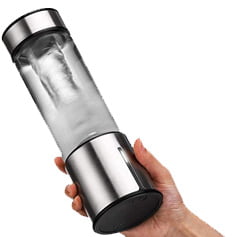
Portable blenders are a new type of blender to hit the market, and not be confused with ‘personal’ blenders which generally refer to the single-serve bullet blenders.
These types of blenders are made up of a clear glass tube, one end screws into the blade base which contains the motor. The other end screws into the lid. The blenders are lightweight and smaller than the average hydro flask, so are actually portable.
What are Portable Blenders best used for?
While the advertising will suggest you can make fresh smoothies in your car, for most people a portable blender is going to be used in the office or perhaps after the gym. Which of course makes them perfect for smoothies and protein shakes.
They are also great for parents making baby food on the go. Yes, you can just pop one in your diaper bag and go out. Add a few veggies from your plate and a little water, and you have instant baby food while you’re enjoying your meal.
Pros
Being so portable is obviously one of the biggest advantages. The blade/motor unit runs on a rechargeable battery which is charged using a standard USB charger.
Because a portable blender is lightweight and a self-contained unit with no cables, you can move it around while it is in operation – meaning no bits get stuck to the top or sides.
Cons
These are relatively new to the market, so any common and recurring faults are only just starting to come out. However, as you are not using these in a kitchen leaking is going to be a concern. Make sure both ends are tightened.
The convenience of them also creates the risk of leaving utensils in the blender. This only becomes a problem if you turn it on to remix, particularly baby food.
5. Countertop Blender
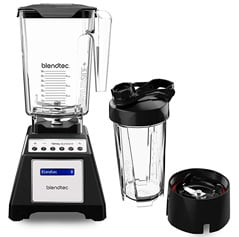
Not to be confused with a food processor, these types of blenders are the one-stop-shop for great drinks. The leaders in this market would be Vitamix and Kitchenaid, although excellent marketing from Blendtec and the ‘make it blend’ campaign has raised their profile.
They generally have a larger 64 oz or almost 2-liter capacity, so countertop blenders are a great option if you are going to be making drinks for a family or party. One caution with using these types of blenders is to check carefully before using to blend hot liquids. Most countertop blenders are designed for cold or cool liquids and have lids that seal well.
This is great for keeping flying ice and smoothie ingredients from flying around but causes a huge pressure to build up for steam from hot ingredients, which can cause an explosion.
What are Countertop Blenders best used for?
Drinks. Hands down these make the best drinks around. However, you can expand your thinking a little, and turn these types of blenders into the one-stop treat shop too.
Blended smoothie can make the most delicious ice blocks, creating a great healthy treat on summer days. You can even use them to create alcohol ice blocks for a fun adult treat for parties.
Pros
These are powerful blenders able to mix most things. While they usually have multiple speed settings, most have a pulsing option which makes blending a variety of ingredients easy and ensures everything is blended.
While older versions have a reputation for being difficult to clean, the newer varieties are easier to care for. Generally, it’s just a case of adding a few drops of dishwashing liquid to a blender full of water and blending for a few seconds.
Cons
Because they are powerful with a large capacity, these types of blenders are pretty bulky. If you’re using them every day this isn’t such an issue, but if you’re just wanting them for a monthly party storing them in a small kitchen can be an annoyance.
The other big problem people encounter with these types of blenders is accidentally blending foreign objects. Most people who use them regularly have at least one story of the spoon that went in the blender while it was on.
Although the noise is alarming, there is a risk of damaging blades and potentially the glass as well.
6. Stand Mixer
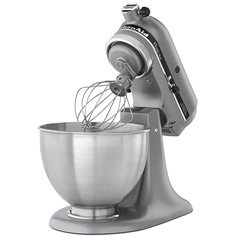
Stand mixers are also known as cake mixers because this is really what most people use theirs for. They are like the hand blenders or hand mixers, but far more powerful. KitchenAid, Cuisinart, Hamilton Beach, Kenwood, and Sunbeam are all competing for top place as the world’s most popular stand mixer.
The Hobart KitchenAid and Sunbeam Mixmaster were the first on the market but didn’t become commonplace in kitchens until the 1920s. Although larger commercial varieties had started appearing in bakeries before this.
What are Stand Mixers best used for?
While most people use these mixers for cake batter, they generally have a range of different attachments that can turn them from a basic mixer into a really versatile kitchen tool.
Whisk attachments make them perfect for meringues, with no need to stand over the mixer while getting to the right consistency. While a standard dough hook means making bread-dough, or heavy cookie dough is a simple task.
Some also include the option to add blenders, food grinders or even pasta cutting tools.
Pros
Investing in a stand mixer is essential for a serious home baker. Nothing else creates cake batter as well. The powerful motors will generally allow you to mix up very heavy and sticky dough, with variable speeds allowing for just the right amount of mixing.
Cons
They are big and bulky, as well as pretty heavy. So, they’re not something you want to pull in and out of a cupboard often. However, they do also take up a lot of space on a benchtop.
Stand mixers are not the easiest things to clean. While the mixing bowl and beaters are generally dishwasher safe, the actual mixer itself tends to get covered in flour and batter too. The only way to clean a stand mixer itself is with a damp cloth – and with a sticky mixture, this can be hard to remove.
7. Commercial Blender
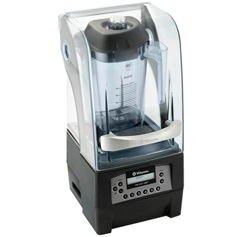
If you’re looking for something with pure power, then these types of blenders are going to be what you want. The Vitamix 5200 and Cleanblend Blenders are both popular professional blenders, but other semi-pro options such as the Ninja and Blendtec also provide consumers with a professional style blender.
What are Commercial Blenders best used for?
These types of blenders are all about power. They are intended to suit a heavy user, and they are designed to blend more robust ingredients.
Commercial blenders are going to be great if you want to make large batches of hummus, dips or intend to create smoothies or iced drinks at least once a day. They are an absolute necessity if you are going to be creating blended foods and drinks more than once a day.
Pros
The bigger motor and more robust build make commercial blenders a better option for high users. However, check the warranty if you are using them in a commercial kitchen. Some blenders are labeled as ‘commercial’ but really are intended for high-use home users rather than high-use commercial users.
These machines will cope with most things from soft cooked pumpkin through to roasted nuts for butter.
Cons
The more powerful motor generally comes with a much higher price tag.
Most are theoretically self-cleaning if you just add a little water and dishwashing liquid. However, the reality is that certain ingredients can be difficult to clean, particularly sticky syrups may need some help from a scrubbing brush.
Final Thoughts
Unfortunately, there really is no single option that is going to do absolutely every function perfectly. However, it is not too hard to find a blender that will work for your primary need. Then you need to work out which option will work best for any other needs.
The biggest consideration should start with how often you intend to use your blender, as this will give you a good indication of the build quality you will need. Then think about the function.
Don’t make the mistake of thinking that more power is going to be best. Or even the highest price tag. Different blades, different capacities, and different attachments can all make a significant difference in how well the blender will work with your lifestyle.
